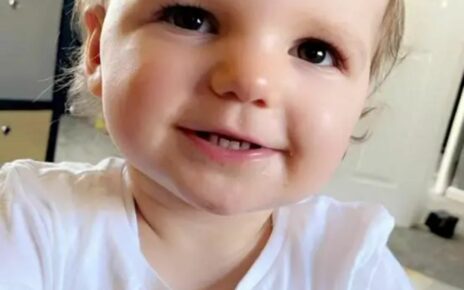Save articles for later
Add articles to your saved list and come back to them any time.
Jack Hayes’ luck ran out not long after dawn in the Froissy Valley in northern France, close to the Somme River.
Bayonet fixed, he was trying to rush a German machine gun post. He was an old soldier, but a young man.
Jack Hayes, far right, having a drink with mates on August 31, 1914. Credit: Photo courtesy of Helen Thomson and Nola Moore
Aged just 23, he’d spent so much time at war, from Gallipoli to the Western Front, that he was due for “Anzac leave” in a few days: a trip home to Australia reserved for those known as the “originals” who had signed up in 1914.
But on August 23, 1918, a German bullet found Hayes as he and his mates from C Company, 1st Battalion, chased German soldiers east across France.
The bullet tore through the gas mask hanging around Hayes’ neck, entered his chest and lodged in his liver, carrying fibres and dirt from his uniform and metal from his gas mask deep into the wound.
Jerry FullerCredit: Photo courtesy of Mark Deacon
His mate Jerry Fuller and a German prisoner saved him. They hauled him to a fallen tree and sat him against it. Blood pooled around Hayes’ pelvis rather than collecting in his chest and drowning him.
Fuller was a fierce little Australian soldier who stood at just shy of 158 centimetres, and was a tailor by profession. He wasn’t about to let a German gunner get away with bringing down his sergeant.
He took the gunner prisoner and dragged him to where Hayes sat. “I’ve got the bastard that shot you, and I’m going to shoot him down for you,” Fuller declared.
“No,” said Hayes. “Sit him down next to me.”
And there they sat, Australian and German, young men who had tried to kill each other but whose enmity was meaningless now. They shared photographs of their families.
The Chipilly Six, the Unsung Heroes of the Great WarCredit: By Lucas Jordan
Other Australians suffering wounds soon lay around, and yet another German prisoner approached a close mate of Hayes, 21-year-old Sergeant Harold Andrews, and asked permission to begin dressing the Australians’ wounds.
The story of Quartermaster Sergeant Jack Hayes’ encounter with mortality and the unexpected care given by his enemies is told by historian Lucas Jordan in his book The Chipilly Six, the Unsung Heroes of the Great War.
The “six” were a group of young Australians who specialised in “stealth raiding”.
They sneaked out beyond their lines – often in search of souvenirs such as enemy helmets, daggers, medals and wine – while also clearing out nests of Germans.
Their most astonishing feat, much ignored by history, gives the book its title.
On August 9, 1918, Hayes and fellow sergeant Harold Andrews went absent without leave and crossed the Somme River, intent on hunting souvenirs.
Men of C Company, 1st Battalion, wait to go “over the top” for the second time in hours on August 23, 1918. Sgt Harold Andrews, his stripes visible, sits at centre right.Credit: Hubert Wilkins MC, courtesy Australian War Memorial
Behind them, an entire British Army Corps had been trying desperately, but failing, to take a ridge above the Somme called Chipilly Spur.
The battle had roared for 30 hours. German machine gunners on the spur had taken down 2000 British soldiers.
Hayes and Andrews figured the frontal assault was futile. They returned from their expedition and got permission to lead “a strong patrol” to surveil the Germans on Chipilly Spur.
A soldier picks through the ruins of Chipilly village, France, on August 10, 1918, the day after the Chipilly Six had cleared the Spur.Credit: Courtesy of the Australian War Memorial.
Hayes and Andrews chose just four volunteers: George Stevens and Dick Turpin, both stretcher bearers who volunteered as riflemen for the operation, and close mates Jerry Fuller and Billy Kane, all of them from the 1st Battalion.
They tucked into their webbing empty sandbags for souvenirs, slung bandoliers of ammunition over their shoulders – 200 bullets per man – and stuffed their pockets with bombs.
Lucas Jordan undertook an immense amount of research to stitch together the confounding details of what happened over the next few hours.
Essentially, the six outflanked the Germans, bombed them in their dugouts, undertook bayonet charges, captured machine gun posts, and turned German machine guns against fleeing machine-gunners.
When they were done, having captured at least nine machine guns and 71 prisoners, the Chipilly Spur was open for the British to advance.
General Sir John Monash.
The British, embarrassed, never gave the Chipilly Six credit for their astonishing efforts.
Worse, Australia’s Sir John Monash wrongly claimed the spur was captured on his orders by an American regiment and the Australian 13th Brigade, leaving the six out of the story entirely.
It has been left to the historian Jordan to right a very old wrong.
His book is vastly more than a recounting of the Chipilly Spur capture, however. He traces the lives of the six before and long after the war, all of which amount to absorbing studies of Australian history.
All six came home to Australia, despite wounds and illnesses. Even Jack Hayes made it. As he sat bleeding in the Froissy Valley, 14 days after the Chipilly adventure, stretcher bearers were told to leave him. The worst cases, those not expected to survive, were to be left till last.
Jack Hayes, centre, being welcomed home in Australia on February 15, 1919.Credit: Picture courtesy Nola Moore and Helen Thomson
Deprived of food and water, he sat in his blood in the open for a day and half before he was carried away for treatment.
Doctors in France and at an Army hospital in Wales decided it was too dangerous to remove the bullet. He was shipped home to Australia, where he was expected to die “in the arms of his mother”.
Instead, an Australian surgeon removed the bullet on Anzac Day, 1919.
Hayes helped fellow ex-servicemen for 50 years as a leading light in the Marrickville RSL club in Sydney, was awarded the British Empire Medal in 1968 and lived to 82, still troubled by his old wound.
The Chipilly Six: Unsung Heroes of the Great War, by Lucas Jordan. Published by NewSouth.
Start the day with a summary of the day’s most important and interesting stories, analysis and insights. Sign up for our Morning Edition newsletter.
Most Viewed in National
From our partners
Source: Read Full Article









